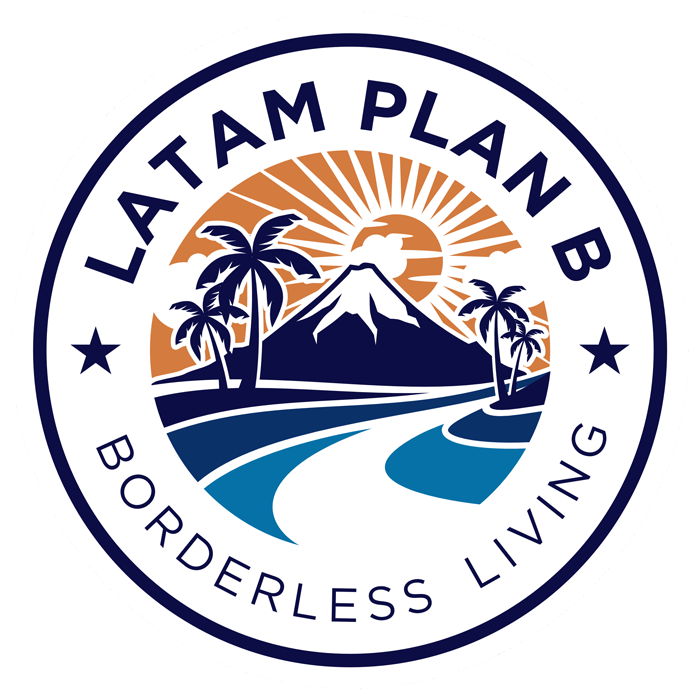If you’re dreaming of a new life in Latin America but don’t want to leave your beloved pets behind, the good news is you can take them with you!
Moving to a different country with your furry friends is an exciting adventure, but it can also be stressful for you and your pets. Our pets are part of our family, so we want to ensure their safety and well-being during an international move.
In this article, we’ll help you to make your pet’s relocation process as smooth and comfortable as possible. When you finally reach your destination alongside your best friends, the journey will have been completely worth it.
Relocation services
One option is to use a professional pet relocation service. There are many benefits to using these services, however, they do come with an additional high cost on top of a process that can already be expensive. So it might not be feasible if you’re on a tight budget.
You may also prefer to take a more hands-on approach to your pet’s relocation. By researching the process and taking the necessary steps yourself, you can ensure that your pets are safe, comfortable, and well-cared for during the move. This can give you peace of mind and a greater sense of control over the process.

Getting the paperwork right
You’re allowed to travel with your pet to any country in Latin America as long as you have the required paperwork.
These paperwork requirements may seem like a lot to organize and get your head around, but the process is a lot more straightforward and easier than it may first appear.
Your first step is to research the specific entry requirements for your pet in the country you plan to relocate to. This may include obtaining a health certificate and proof of vaccinations from a USDA-accredited veterinarian, as well as complying with any quarantine or import regulations. It’s important to note that these requirements can vary widely from country to country, so it’s crucial to do your homework well in advance of your departure date.
For a step-by-step guide on what paperwork you’ll need to travel to the country you’re relocating to with your pet, visit the USDA Animal and Plant Health Inspection Service website.
What is a USDA-accredited veterinarian?
The health certificate and proof of vaccinations must be completed by a USDA-accredited veterinarian, which is a veterinarian who has been authorized by the United States Department of Agriculture (USDA) to perform certain tasks related to animal health, such as completing health-related requirements for animals intended for export.
To find a USDA-accredited veterinarian, you can use the search tool on the U.S. Department of Agriculture website. Here’s how:
- Go to the USDA’s accredited veterinarian search tool.
- Enter your state and county.
- Select category I.
- Click the “Search” button.
Getting the timing right
The timing of your paperwork is very important. You’ll need to ensure that your pet’s health certificate is still valid on the day of your arrival in your country of relocation in Latin America. Health certificates are usually valid for ten days if traveling by air, and 30 days if traveling by land.
This health certificate must be USDA ink signed and embossed before traveling. This means you must leave time for the health certificate to be mailed back to you after it has been endorsed. Because of this timing, it’s recommended that you purchase an overnight return shipping label with Saturday delivery.
Relocating to Mexico?
If you’re relocating to Mexico from the US, your pet will not require a health certificate unless the airline requests it.
For those relocating to Mexico and planning to frequently travel throughout Latin America, you have the option of enrolling into the Frequent Travels Pet Program.
The Frequent Travels Pet Program, also known as “Programa Mascota Viajero Frecuente”, is a program offered by the Mexican government’s Agricultural Sanitation, Safety, and Quality Agency (SENASICA) to facilitate the entry and exit of pets into Mexico for frequent travelers.
Under this program, eligible pet owners who frequently travel with their pets to Mexico can obtain a special import permit that is valid for multiple trips over the course of six months. This can help simplify the process of traveling with your pet and eliminate the need to apply for a new permit every time you enter the country.
To be eligible for the Frequent Travels Pet Program, pets must meet certain requirements, including being up-to-date on their vaccinations and having a microchip or tattoo for identification purposes. Additionally, pet owners must register with SENASICA and provide documentation demonstrating their eligibility for the program.
It’s important to note that while the Frequent Travels Pet Program can make it easier to travel with your pet to Mexico, all pets are still subject to the country’s import regulations, which can vary depending on the type of animal, breed, and country of origin. As such, it’s important to do your research and comply with all necessary requirements to ensure a smooth and stress-free travel experience for both you and your furry friend.
Flying or driving?
If you choose to drive into Mexico with your pet, a health certificate is not required. Your pet will, however, need to cross the border in a pet crate and will be inspected upon arrival. Visit the Animal and Plant Inspection Service website for more information on the requirements for your travel date.
If you’re planning on driving through Mexico into other countries, you will need to meet the pet import requirements for each country that you drive through.
Flying
If you’re planning on flying into Latin America with your pet, they will need to travel either in the cargo hold or in the cabin with you.
Each airline will have its own requirements, so check with the airline that you book your travel with. But most airlines allow pets under 20 pounds (about 9kg) to travel in the cabin. They will need to be kept in a pet travel bag under the seat in front of you.
Larger pets will need to travel in the cargo hold in a pet crate that meets the requirements of the airline.
TIP: When your pet travels in the cargo hold, the airline will secure the door of the crate shut with cable ties. We recommend keeping a pair of scissors easily accessible in your checked-in baggage, so that you can cut the cable ties and open the door of the crate as soon as you’re reunited with your pet. Some pets will be happy to remain in the crate, but if your pet is experiencing stress or anxiety, they will relax quickly if you let them out.
Your pet will arrive on the baggage carousel in its crate for pickup.
Stopovers
If your flight has stopovers that do not require you to go through immigration, you will not need to have documentation for your pet for the stopover country.
Crate training
Most airlines require that pets be transported in a crate that meets specific size and ventilation requirements. For travel in the cargo hold, the crate must be tall enough for your pet to comfortably stand up, and wide enough for them to be able to turn around in a full circle. Your USDA-accredited veterinarian will be able to advise you on the crate size that you need to purchase for your pet to pass regulations.
We recommend purchasing a crate well in advance to begin crate training, which is an essential step toward ensuring a safe and stress-free journey for your furry companion.
When you invest time in crate training, you’re not just teaching your pet to tolerate being confined in a crate. You’re also helping them learn to associate the crate with a safe and comfortable space. This can help to reduce their anxiety during the journey and make them feel more secure in unfamiliar surroundings.
Sedating your pet
Sedating your pet for air travel comes with a high risk of heart and respiratory problems so it’s not recommended. Sedation impairs your pet’s natural ability to balance their body and restore equilibrium.
For a much safer option, ask your vet to prescribe an anti-anxiety medication or use a natural alternative for helping to reduce their stress, such as CBD for pets.
Booking your pet in advance
If flying with your pet, make sure to book them into your flight as early as possible. Each flight has limited availability for traveling pets, so book in early to ensure their spot.
Service dogs
A service dog is specially trained to provide assistance to individuals with disabilities or special needs.
Service dogs are different from pets and are protected by law. Under the Americans with Disabilities Act (ADA) in the United States, service dogs are permitted to accompany their owners in public places and on transportation, such as airplanes and buses, even if pets are not allowed.
If you have a service dog that you’ll be traveling with, contact your airline to ask about their requirements for taking them in the cabin with you.
Psychiatric service dogs
Psychiatric service dogs are specially trained animals that provide assistance to individuals with psychiatric disabilities. They are trained to perform specific tasks or behaviors that help their owners manage and cope with their mental health conditions, such as post-traumatic stress disorder (PTSD).
Psychiatric service dogs are recognized as service animals under the Americans with Disabilities Act (ADA) in the United States, and are therefore protected by law. This means that they are permitted to accompany their owners in-cabin in airplanes, and cannot be refused by an airline.
Emotional support animals (ESA)
Emotional support animals (ESAs) provide comfort, companionship, and emotional support to people with mental health conditions or emotional disabilities. Unlike service dogs, emotional support dogs are not trained to perform specific tasks, but rather provide support through their presence and companionship.
Emotional support dogs are not considered service animals under the Americans with Disabilities Act (ADA), and therefore can be refused by airlines.
In recent years less airlines have been honoring emotional support dogs for in-cabin travel. ESA-friendly airlines in Latin America include Aeromexico, Avianca, Copa, Viva, Latam, and Volaris.
Final thoughts
Just because you’re relocating to Latin America doesn’t mean that you have to leave your besties behind. With a little bit of planning and preparation, you and your furry companions can embark on a new adventure filled with excitement, new sights, and unforgettable memories.
Most regions of Latin America are very dog friendly, so get ready to enjoy a wonderful new life together.

